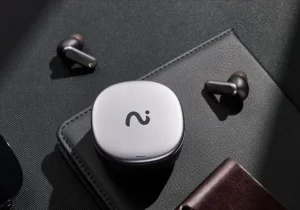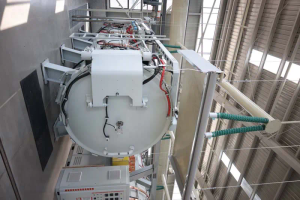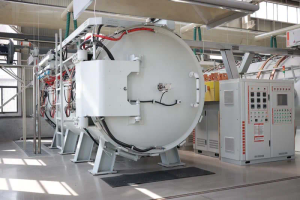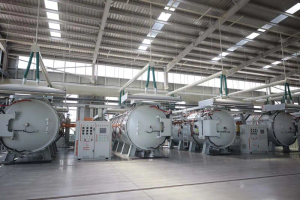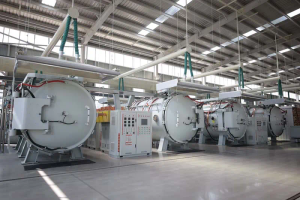There are more and more AI jobs in hospitals
Judging from the current technology, an artificial intelligence doctor who can completely replace humans is still far away, but AI has already shown its talents in the medical field.
Chief Physician Yu Risheng, head of the Department of Radiology at the Second Hospital of Zhejiang University, introduced that AI is used to varying degrees in prevention, inspection, diagnosis, treatment, rehabilitation, as well as drug research and development, medical device production, and medical health management.
“In clinical practice, almost 90% of them are related to medical imaging. Many imaging doctors can no longer imagine working without AI.”
Read hundreds of images in seconds
Pull out nodules that are invisible to the naked eye
In the Radiology Department of the Second Hospital of Zhejiang University, reporter Qian Bao watched the whole process of doctors reading films with the help of AI: Dr. Wang Qiyuan from the Radiology Department opened a chest CT with 374 images, and the AI program in the system read out 9 nodules, There were 5 inflammations and 6 fractures, 1 of which was a high-risk nodule.
She moved the mouse to a high-risk nodule, and the screen immediately displayed its location, size and malignant probability (89%), “AI can quickly and accurately find almost all nodules, and distinguish nodules based on size, density, shape, etc. If we read films and write reports based on AI, the work efficiency and accuracy will be much higher.”
Yu Risheng said: “It is very difficult for human eyes to identify nodules below 5 mm, but AI can be accurate to 1-2 mm. The layer thickness currently set in our department is 1.5 mm.”
He remembered that once a patient with lung metastases after lung cancer surgery came to see a doctor with a report from another hospital, which indicated 2 metastases, and the clinician suggested radiofrequency treatment. However, 6 metastases were found in the chest CT examination of the Second Hospital of Zhejiang University after AI reading. This situation is not suitable for radiofrequency treatment. Chemotherapy or targeted and immunotherapy need to be considered. “AI can assist imaging doctors to provide more accurate and powerful clinical Diagnosis can especially help junior doctors who are relatively inexperienced.”
In 2015, the Second Hospital of Zhejiang University took the lead in introducing the AI intelligent film reading system. Previously, a doctor saw chest CT films of 53 patients on average every day, but now the number has doubled, reaching 180 patients at the peak of the epidemic infection last year.
Yu Risheng said that in addition to provincial tertiary hospitals, many county-level hospitals are now equipped with this system, which alleviates the problem of insufficient primary medical resources to a certain extent and promotes the homogenization of medical services.
It is more and more common for low-dose CT to detect pulmonary nodules in physical examination every year, which is also “credited” by AI.
Yu Risheng said that the accuracy of AI film reading is so high that many nodules with no clinical significance will be “picked out”. Once AI suggested that a patient had 44 nodules, 14 of which were high-risk. “At this time It requires our doctors to carefully check and judge, and pay attention to the wording when finally writing the report, so as not to cause excessive anxiety in patients.”
Although AI has reduced the probability of missed diagnosis as a whole, it still makes mistakes occasionally. For example, when the lesion appears in a complex structure such as the hilar area, or is close to the heart, and is affected by the heartbeat, AI may easily miss the diagnosis.
“In order to avoid missed diagnoses, doctors will pay special attention to these special situations, inform manufacturers of the problems and deficiencies in the system, and they will update and iterate based on feedback. Therefore, even in the field of imaging, AI cannot completely replace doctors at present, but only plays an auxiliary role. ”
In addition to pulmonary nodule image detection, AI’s film reading skills are also reflected in rib fracture location, retinal image recognition, thyroid ultrasound image diagnosis, and coronary artery extraction.
Taking rib fractures as an example, there are 24 ribs on the left and right sides of a person. Not only are there a large number of ribs, but there are also situations such as costal cartilage calcification, hidden fractures, or slight cortical bone damage, which are difficult to accurately identify with the naked eye. Moreover, the ribs are thin-layer images, and there are hundreds of images after scanning, and the doctor’s workload is extremely heavy. AI can identify every layer and every rib in a short time, and mark every fracture point and severity.
In Yu Risheng’s imagination, in the future, AI can not only assist doctors in examination and diagnosis, but also predict the progress and prognosis of the disease. “After identifying pulmonary nodules, AI can obtain molecular radiomics classification based on the image data of the nodules. So as to predict the growth and development of nodules in 5 and 10 years.”
The idea of predicting the future is not a dream. In the Department of Endocrinology, Zhejiang University Children’s Hospital, the AI bone age evaluation system has realized the function of predicting children’s future height.
According to Fu Junfen, an expert in pediatric endocrinology and the executive vice president of Zhejiang University Children’s Hospital, there are two main methods for manually assessing bone age. Among them, the GP method is highly subjective and has low accuracy; although the TW series methods are more accurate, they take a long time.
In order to improve the efficiency of bone age detection, Fu Junfen led the team to develop the first artificial intelligence bone age evaluation system combined with the TW3 method. The team carried out multi-center clinical research in Fudan Children’s Hospital, Tongji Hospital of Huazhong University of Science and Technology, Shenzhen Children’s Hospital and other hospitals in the early stage. A total of 20,000 normal children’s bone age films were collected and sorted out. Artificial intelligence learned these data to form a set of Automatic bone age detection algorithm.
As early as the beginning of 2018, the AI bone age evaluation system began to be tested in Zhejiang University Children’s Hospital, and it was fully put into clinical use in 2019. After the continuous expansion and update of the database, AI’s prediction of bone age is becoming more and more accurate.
In the past, it took an experienced endocrinologist about 8 minutes to read the bone age film, but now the artificial intelligence only needs 0.3 seconds to complete the detection, and automatically generates a report containing bone age evaluation, Diagnostic report for height assessment, height prediction, developmental assessment.
One of the team members, Liu Yaru, a graduate student majoring in pediatric endocrinology at Zhejiang University School of Medicine, said that compared with doctors, AI can not only detect bone age more accurately and quickly, but also predict future height more efficiently based on algorithms. Clinical practice shows that the accuracy Already higher than the average doctor.
Science and technology always give people a cold feeling. No matter how AI learns and evolves, it is difficult to obtain human emotions and thoughts. But in some special cases, this has become its advantage.
Every year, the country carries out large-scale screening of two cancers (breast cancer and cervical cancer) for rural women, which is carried out by grass-roots maternal and child health care hospitals and guided by higher-level women’s health care hospitals. Due to the wide range of screening, the large number of people, and the heavy workload, the efficiency and accuracy may decrease due to the fatigue of screening personnel during the process.
Last year, Shangyu Branch of Zhejiang University Women’s Hospital and Shaoxing Shangyu Maternal and Child Health Hospital used breast ultrasound robots combined with intelligent diagnostic systems for breast cancer screening for the first time. In the soothing music, the robot automatically completes the breast ultrasound process scan throughout the day. The whole process only takes 3 to 5 minutes. With the improvement of the process, this time can continue to be shortened.
Chen Xin, Deputy Chief Physician of Women’s Health and Breast Surgery Department of Zhejiang University and Executive Director of Shangyu Women’s Health Insurance, said that the fully automatic intelligent breast ultrasound robot for this screening has achieved standardized autonomous scanning through a high degree of integration of robots and ultrasound imaging technology to obtain high-quality Imaging solves the problems of high variability in traditional medical ultrasound image acquisition, poor repeatability, over-reliance on high-level doctor techniques, and shortage of ultrasound doctors.
At the same time, the images screened by the robot are uploaded to the intelligent diagnosis system, and the intelligent algorithm assists in the diagnosis of the images, and then uploads suspicious cases to the cloud, and the experts from Zhejiang University Maternity Hospital will read the images again, which reduces the difficulty of participation of provincial experts and improves the quality of life. Quality of two cancer screenings.
The staff of Shangyu Women’s Insurance also found a surprising situation: “When visiting the outpatient clinic, some patients would say, ‘Oh, why is it a male doctor’ as soon as they came in, and they were embarrassed to examine the male doctor. Our ‘two cancers’ screening Although the mobilization efforts are strong, some rural women are still a bit resistant, and the use of robot inspections has relieved their concerns and improved the overall screening rate.”
